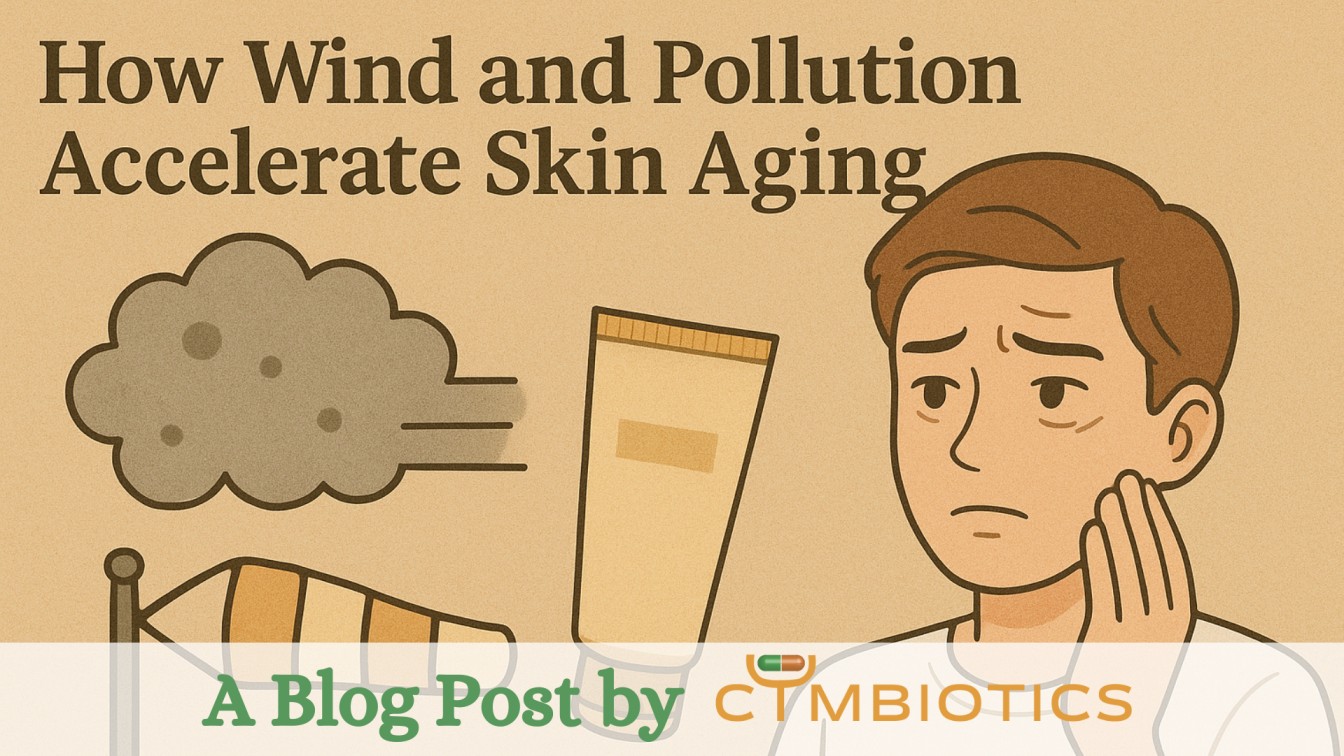Modern urban environments expose the skin to a constant barrage of environmental stressors, with airborne pollution ranking among the most damaging. In windy conditions, these pollutants are carried and deposited more efficiently, increasing both the intensity and frequency of exposure. Over time, this combination accelerates visible aging, disrupts barrier function, and worsens pre-existing skin conditions.
The Skin as a Pollution Target
The skin, as the body’s largest organ, is the first line of defense against environmental aggressors. Its outermost layer, the stratum corneum, forms a physical and biochemical shield but this barrier is not impenetrable. Particulate matter (PM), especially PM₂.₅ and PM₁₀, along with gaseous pollutants like nitrogen dioxide, ozone, and polycyclic aromatic hydrocarbons, can adhere to the skin surface and infiltrate through hair follicles, sweat glands, or compromised barrier sites.
Once inside, pollutants trigger oxidative stress, generating reactive oxygen species (ROS) that damage cellular proteins, lipids, and DNA. This oxidative assault activates inflammatory pathways, disrupts collagen synthesis, and accelerates degradation of extracellular matrix components key hallmarks of premature skin aging.
Wind as a Pollution Multiplier
Wind plays a dual role in environmental skin damage. On one hand, it acts as a physical irritant, contributing to dryness by increasing transepidermal water loss (TEWL) and physically disrupting the lipid barrier. On the other, it transports and distributes airborne pollutants more widely, allowing them to reach the skin more easily and in greater concentrations.
Strong winds can carry fine particles deep into urban and rural areas alike, increasing the risk of skin contact even for individuals far from primary pollution sources. This combination of mechanical stress (drying and micro-abrasion) and chemical stress (pollutants) compounds the risk of barrier impairment and visible aging.
Clinical Manifestations of Pollution and Wind Exposure
Chronic exposure to polluted, windy environments can lead to a variety of skin changes, including:
- Accelerated Wrinkle Formation: ROS-induced collagen breakdown leads to earlier and deeper wrinkle development.
- Uneven Pigmentation: Pollutants stimulate melanogenesis, resulting in hyperpigmentation and age spots.
- Dryness and Rough Texture: Wind-induced TEWL depletes skin moisture and softens lipid cohesion.
- Exacerbation of Chronic Skin Conditions: Pollution and wind can worsen atopic dermatitis, psoriasis, and acne by aggravating inflammation and microbial imbalance.
- Delayed Barrier Recovery: The combined assault of oxidative stress and physical irritation slows the skin’s ability to repair itself.
The Role of the Skin Microbiome
Emerging research shows that airborne pollution alters the composition and activity of the skin’s microbial ecosystem. Pollutants can selectively promote the growth of pro-inflammatory microbes while suppressing beneficial strains, leading to dysbiosis. Wind may further contribute by drying the skin, reducing its hospitable conditions for commensal species, and increasing colonization by opportunistic pathogens.
Cymbiotics’ Research Perspective
At Cymbiotics Biopharma, environmental skin stress, is an important focus area in topical research. The company’s R&D explores how advanced dermal delivery systems can better transport antioxidants, barrier-repair agents, and hydration boosters to the layers of skin most affected by environmental aggressors. By integrating findings from dermatological science with innovative delivery technologies, Cymbiotics aims to contribute to solutions that strengthen the skin barrier, reduce oxidative stress, and promote resilience in challenging urban environments.
References
- “The impact of airborne pollution on skin” – E. Araviiskaia et al., International Journal of Cosmetic Science, 2023.
- “Skin Aging and Air Pollution” – Georgeta Bocheva et al., International Journal of Molecular Sciences, 2023.

